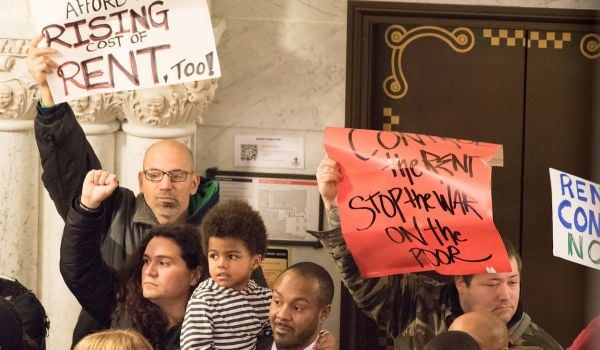Berkeley Says it Will to End Single-Family Zoning, Which It Pioneered
Berkeley City Council members unanimously approved a “Resolution to End Exclusionary Zoning in Berkeley” this week, according to a report in Berkeleyside, denouncing the city’s history of racist land-use policies while declaring their intent to change its zoning rules over the next several years. The resolution, which does not actually change the city’s policies, notes that Berkeley was the first city in the United States to adopt a single-family zoning policy, in 1916. It traces the history of redlining and other exclusionary housing policies, like a 1973 Neighborhood Preservation Ordinance which banned multifamily housing in many areas, to show that the city’s zoning policies still perpetuate racial segregation.
“We can’t address racial and economic segregation unless we address zoning reform,” Councilmember Lori Droste, who introduced the resolution, said at a meeting, according to the report.
In addition to the resolution, Droste also introduced legislation that would reform the city’s zoning code and allow more three- and four-unit homes in areas currently zoned for single-family use. The city is beginning a two-year process to update its general plan with rules that allow more multifamily development, according to the report. As housing advocates across the U.S. have pushed for more equitable housing solutions, lawmakers have begun to overturn single-family zoning policies in places like Portland and Minneapolis.
How Does New Housing Impact Nearby Rents?
City Monitor surveys a series of recent research reports looking at how new construction affects nearby rents. The research shows that new housing construction is correlated with a range of effects. One study found landlords of rent-regulated buildings were less likely to evict current tenants after new housing was built. Another study found new construction decreased nearby rents in the high-end market and increased rents in the low-end market, according to the report. The findings contribute to a debate within the housing-policy world about whether building new market-rate housing reduces the cost of housing in the surrounding area by increasing supply, or whether it’s likely to cause displacement of lower-income residents by making the area more attractive to higher-income people. But they don’t present a clear confirmation for either side, City Monitor says.
“Displacement and gentrification have been really acute issues for a long time, but it’s really difficult to get a causal handle on them,” Kate Pennington, a UC Berkeley PhD candidate who authored one of the studies, told City Monitor.
Pennington studied new construction in areas that had recently suffered fires, in order to avoid skewed data by focusing on neighborhoods that were already attracting lots of new construction, according to the report. She found that within 500 meters (about a third of a mile) of that new construction, rents decreased between 1.2% and 2.3%, and that residents were 17% less likely to move to lower-income zip codes, a measure of displacement risk, according to the report. Those areas also saw a net increase in wealthier residents, a measure of gentrification, the report says. Pennington concluded that developing more market-rate housing and subsidized affordable housing are “complementary policy levers,” according to the report.
Minneapolis Explores Rent Control
The Minneapolis City Council passed two charter amendments that could pave the way for a rent-control policy in the city, according to a report in the Minneapolis Star-Tribune. The amendments would allow the city to adopt a rent-control ordinance or allow residents to place a question about rent control on an election ballot, according to the report. According to the Star-Tribune, more than 140 people signed up to testify at a meeting about the two charter amendments.
“Landlords were divided on the issue,” the report says. “Some small landlords spoke in favor of the proposals, saying they were willing to support it to help alleviate the pain felt by their tenants. Meanwhile, others sided with larger landlords, saying such restrictions would price them out of doing business in the city, even stressing that rent caps could force them to displace tenants and prevent much-needed capital improvements.”
City officials want voters to weigh in on whether they want rent control before they craft an ordinance with specific rules, according to the story. The amendments need to be approved a second time by the council and then be reviewed by the Minneapolis Charter Commission, the report says, and the debate is “still in its infancy.” But Minneapolis is joining a number of cities that have begun to reconsider rent control, which was considered broadly off-limits as a housing policy for decades, as Next City has reported.
This article is part of Backyard, a newsletter exploring scalable solutions to make housing fairer, more affordable and more environmentally sustainable. Subscribe to our weekly Backyard newsletter.

Jared Brey is Next City's housing correspondent, based in Philadelphia. He is a former staff writer at Philadelphia magazine and PlanPhilly, and his work has appeared in Columbia Journalism Review, Landscape Architecture Magazine, U.S. News & World Report, Philadelphia Weekly, and other publications.
Follow Jared .(JavaScript must be enabled to view this email address)


















